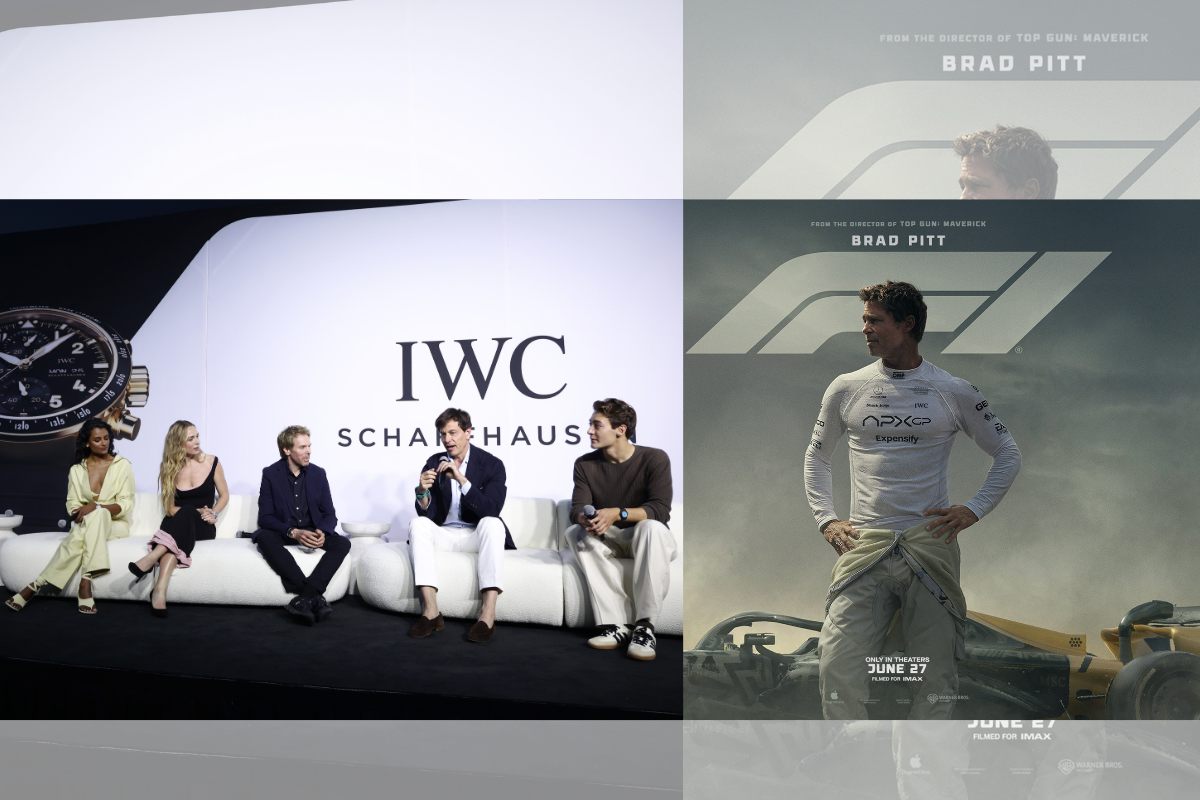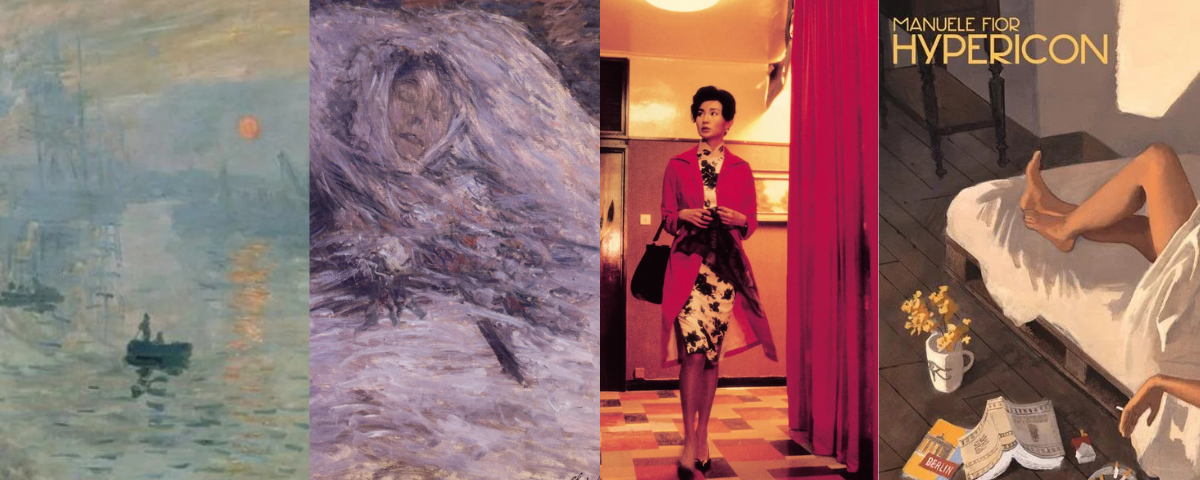
An invisible force unites cinema and Formula 1: the obsession with capturing the movement at the perfect time. A second off the clock can change an entire career, a frame can capture the moment before a crash or convey the breath of someone about to press the accelerator.
On the occasion of the Miami Grand Prix, an event organized by F1’s historical partner, IWC Schaffhausen, brought together the real world of races and the imaginary world of cinema on the same stage.
Alongside Mercedes-AMG PETRONAS Team Principal Toto Wolff and driver George Russell, actresses Kerry Condon (The Banshees of Inisherin) and Simone Ashley (Bridgerton, Sex Education), and producer Jerry Bruckheimer (Flashdance, Top Gun) shared the spotlight, all involved in the making of the highly anticipated F1 movie, directed by Joseph Kosinski. We must wait until June 25, 2025, to see it in theaters. However, we already had a hint of the story: Brad Pitt plays a former driver returning to the track alongside a rising star (Damson Idris).
The film’s production followed the real Formula 1 circus for two years, shooting directly during Grand Prix weekends with an unprecedented focus on authenticity.
It is no coincidence that the same team behind Top Gun: Maverick is producing this film: once again, it explores the boundary between the human body and the machine, between strategy and instinct, between spectacle and engineering precision. For the occasion, IWC created a fictional team — APXGP — complete with a livery, watches, and uniforms, inserted in the grid next to the official teams. It’s fiction, sure. But a fiction that truly races.
F1 on the Screen | Stories of Pilots, Challenges, and Accelerations
When F1 transitions from the track to the screen, it transforms. Trajectories become destinies, moral choices overtake them, and every curve becomes a chance for redemption or ruin. Cinema is interested in not so much the victory as what it asks in return.
Ron Howard’s Rush (2013) portrays the legendary rivalry between James Hunt and Niki Lauda. The race is a pretext to explore the tension between two opposing ways of being in the world: one extroverted and reckless, the other disciplined to the point of dehumanization. In this dialectic, the engine becomes a heart pulsing to the rhythm of identity.
Changing format, Asif Kapadia‘s documentary Senna (2010) takes the path of listening and contemplation. There’s no narration, no front interviews: only Ayrton Senna, through archival footage and interviews, in a narrative that brings out the almost spiritual, mystical side of his driving philosophy. It’s a portrait of a man for whom racing was a form of faith, not just a profession.
F1 has fully entered the serial era with the Netflix series Drive to Survive. The paddock becomes a theater, team principals become tragic characters, and alliances and feuds construct a melodrama in real time. The main competition is still there, but it’s framed by storylines capable of captivating even those who have never watched a Grand Prix. The series’ global success has transformed the audience, bringing people more drawn to the narrative dynamics than the technical ones.

Cinema in F1 | When Fiction Enters the Track
The making of F1 has led actors, directors, and cinematographic technicians to become part of the paddock, not only as mere observers. Brad Pitt raced on track with custom-designed cars, surrounded by professional drivers and real teams. His character, Sonny Hayes, is part of a fictional team, but integrated into the real world of competition.
This total immersion is also a reflection on the current state of cinema: to be authentic today, fiction must push as close as possible to reality. Sports films can no longer settle for metaphor. They must embody the gesture, the pressure, the effort. It is Formula 1 itself that today offers cinema one of the few territories still capable of representing the exceptional human and physical experience that challenges the normality speed, and the epic of our time.
As Russell and Wolff highlighted during the IWC panel, the F1 movie vividly and accurately portrays race dynamics, such as speed. However, the film also highlights many elements rooted in storytelling and fiction inherent to sport.
The technologies [are] so great that you have used, that seriously — even for motorsport [people], for petrolheads like us — it’s authentic. And that is what I’m really looking forward to: whether the public is going to enjoy it, why it’s having the amazing story — the drama, the glory, the love, the romance, and the comedy, you said — it’s all in there to make this movie so authentic.
Toto Wolff to Jerry Bruckheimer during the IWC panel at the Miami Grand Prix event

The crew had to learn the rules of the F1, as Kerry Condon mentioned in the interview, to blend in and capture the moment, without interfering with the race. A job that, rather than resembling typical Hollywood cinema, is closer to the approach of a nature documentary. Except this time, it’s not big cats that are roaring.
A Matter of Time
Time. It’s the word that traverses both dimensions, cinematic and sports. In F1, time is the constant obsession: improving a fraction, anticipating a decision, calculating with absolute precision. Cinema is also a matter of time: in the rhythm of editing, in the construction of tension, in the management of suspense, as well as the time efficiency of production, and also the right time of the theatrical release.
When these two realities collide, as in this upcoming film or the serial narrative, a fertile short circuit is created: speed is not just a spectacle; it becomes a language, a code. Cinema can slow down time to show what usually escapes, while Formula 1 can accelerate it to make us feel more intensely.
Because in the end, the greatest challenge is not just against opponents or against the machine: it’s against time itself. And in that race, every story—real or fiction—plays for it all.








